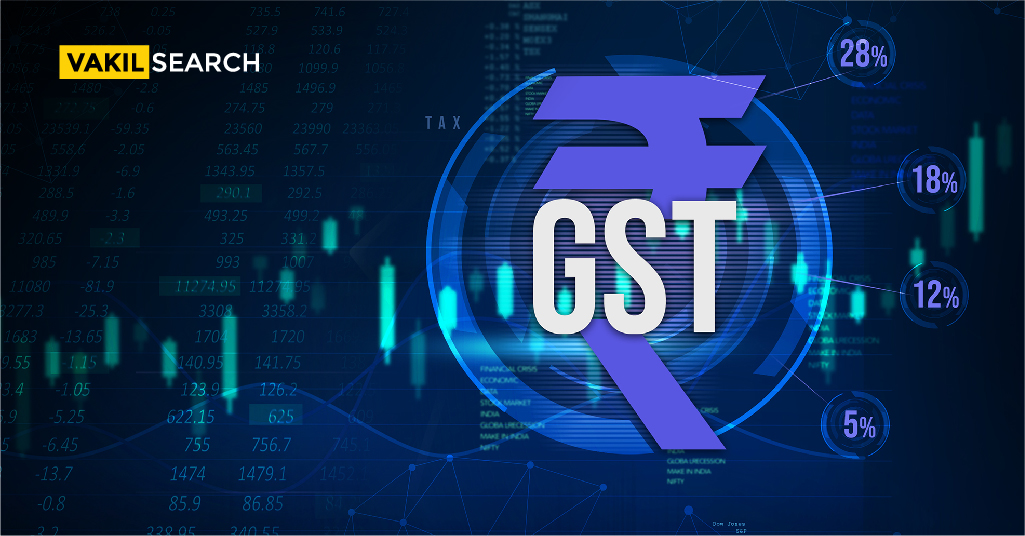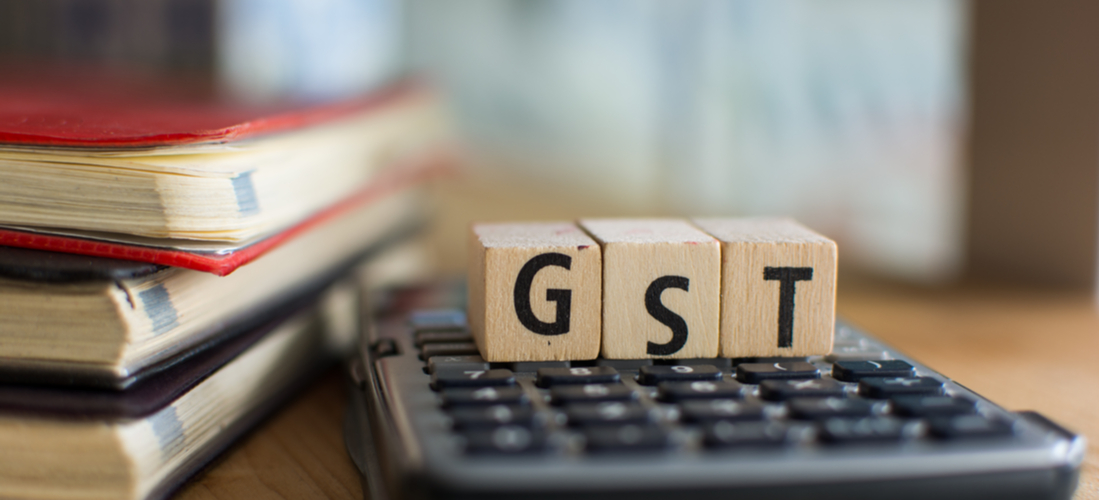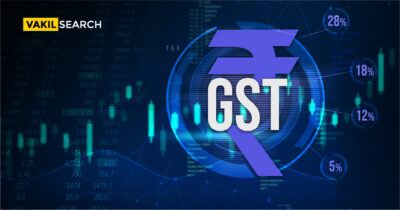GST, or the Goods and Services Tax, is a tax levied on any type of goods and services received and consumed within Indian territory. Three tiers of GST are levied on food items, i.e. 12%, 18%, and 5%. Depending on the place of the restaurant or the type of services provided by the restaurant, this tax percentage changes.
GST is a replacement of the very popular VAT or Value added tax which was levied on different food products and other items. Service tax is also replaced by GST. But alcoholic beverages still come under VAT, and for that, restaurants that sell alcoholic beverages can charge VAT to their customers.
If a customer consumes food and alcoholic beverages, he will get a bill where both VAT and GST are charged. Service charge is a different thing altogether. Some restaurants charge it separately in their bill, and some do not. It is the consumer’s choice whether he wants to pay the service charge or not!
Definition of GST
GST or the Goods and Services Tax is an indirect tax that is levied on every good and service consumed within the Indian territory. It is a multi-staged indirect tax, and it is levied on every step of value addition. When a product comes out in the market and from the producer, it reaches the end customer by roaming through different hands, everyone pays the same amount of GST.
So, the end customer doesn’t need to pay a huge amount of GST after all these transactions. GST subsidized a lot of indirect taxes like VAT, Excise duty, service tax, etc. Before GST, consumers needed to pay a huge amount of taxes in the form of all of these taxes we mentioned here. GST came to market just to ensure that every consumer pays a certain amount of tax, and the tax stays the same at every level the goods pass through.
From July 1, 2017, GST started getting added to Indian bills. This destination-based tax is the sole tax levied on all the domestic products and services enjoyed by Indians across the country.
Importance of GST
There is a line of importance that lies ahead of this taxation system. The two most prominent constitutional amendments were done in favor of this taxation system. Amendment 101 and 122 of the Indian constitution are done to set up a GST on Food council and to implement the taxation system throughout the country.
- There wasn’t any regulation and accountability available in the unorganized sector before GST. In unorganized sectors like the textile industry, leather industry, fishing industry, etc., taxation works smoothly post the introduction of GST.
- Uniformity of taxation is the biggest feature of GST. With this tax implementation, a taxpayer can easily file his income tax without hesitation, as this is a wholesome tax for all the goods and services he has consumed throughout the financial year.
- Before GST, it was tough to calculate the tax in the commodity and services field in India. With this implementation of the Goods and Services Tax, it got simplified. Now, the whole country pays one single tax.
- This indirect taxation has a centralized registration system. This will directly help the GDP or the Gross Domestic Product growth of the country.
Key Rates Applicable to GST on Food Services and Products
| Description | Applicable GST Rate |
| Food services provided by restaurants including takeaway facility (both air-conditioned and non-a/c) | 5% without ITC |
| Any food/drink served at cafeteria/canteen/mess operating on a contract basis in the office, industrial unit, or by any school, college, etc on basis of a contractual agreement that is not event-based or occasional | 5% without ITC |
| Services provided by restaurants within a hotel with a room tariff of less than Rs. 7,500 | 5% without ITC |
| Services provided by restaurants within a hotel with a room tariff of Rs. 7,500 or more | 18% |
| Meals/food services provided by Indian Railways/IRCTC or their licensees both in trains or at platforms | 5% without ITC |
| Food services provided on a premise arranged for organizing function along with renting of such premises | 18% |
| Food services provided at exhibitions, events, conferences, and outdoor & indoor functions that are event-based or occasional in nature | 18% |
| Other Accommodation, food, and beverage services | 18% |
| GST on fresh/chilled vegetables such as potatoes, onions, garlic, leek, etc. | Nil |
| GST on non-container dried leguminous packed vegetables(shelled) whether skinned/split or not | Nil |
| GST on fruits such as fresh grapes, fresh/dried coconut, fresh/dried bananas/plantain, fresh apples, fresh pears, etc. | Nil |
| GST on non-veg items such as meat (not in a container, whether fresh or chilled) | Nil |
| GST on eggs in the shell (fresh/cooked/preserved) | Nil |
| GST on unsweetened milk (pasteurized/unpasteurized), cream, etc. | Nil |
| GST on container packed vegetables (uncooked/steamed/boiled) | Nil |
| GST on vegetables preserved using brine/other means unsuitable for immediate human consumption | Nil |
| GST on meat packed in a container having a registered trademark or brand name | 5% |
| GST on eggs not in shell/egg yolks boiled or cooked by steaming | 5% |
| GST on dried leguminous vegetables packed in a container having a registered trademark/brand name (skinned/split or not) | 5% |
| GST on vegetables such as ginger (excluding fresh ginger), turmeric (excluding fresh turmeric), thyme, curry leaves, bay leaves, etc. | 5% |
| GST on food such as meal/powder of dried leguminous vegetables | 5% |
| GST on fruits, vegetables, nuts, and edible plant parts preserved using sugar | 12% |
| GST on vegetables, fruits, nuts, and edible parts of the plant that are preserved/prepared using vinegar/acetic acid. | 12% |
| GST on food items prepared using flour, malt extract, etc. including cocoa less than 40% of total weight. | 18% |
| GST on chocolate and other cocoa products | 18% |
What were the Original GST Rules for Restaurants?
The original GST rules for restaurants, which were implemented when GST was first launched in July 2017, had different tax rates based on certain criteria:
- Non-AC Restaurants: Restaurants that did not have air conditioning were subject to a GST rate of 12%.
- AC Restaurants with Liquor License: Restaurants with air conditioning or those with a liquor license were taxed at a rate of 18% under GST.
- Restaurants in Five-Star Hotels: Restaurants located within five-star hotels were subject to the highest GST rate of 28%.
Understanding a Pre-GST Restaurant Bill
In the pre-GST era, when dining at restaurants, most consumers often didn’t pay much attention to the details of their food bills. Many were unaware of the various components included in the bill. If you were to revisit a food bill from a fine-dining experience before the implementation of GST registration, you would typically find the following components added on top of the food cost:
- VAT (Value Added Tax): This tax was charged on the food portion of your bill. It was a state-level tax, and the rate varied from one state to another.
- Service Tax: Service tax was charged on the services provided by the restaurant. To simplify the taxation process, the government had already separated the service portion from the food portion and taxed them accordingly.
- Service Charge: Service charge is an amount added by the restaurant and is not a government tax. It’s important to note that service charge is not the same as service tax. Service charge is essentially income for the restaurant, while service tax is a tax collected from you and submitted to the government.
It’s crucial to understand the distinction between these components, especially the difference between service charge and service tax.
With the introduction of GST, the tax landscape for restaurants underwent significant changes, including revised tax rates. These changes have had an impact on how consumers are billed at restaurants.
What Is the Impact of GST on Food Products in the Country?
In restaurants, it is a huge bill simplifier. People used to pay a line of taxes while visiting the restaurants, including VAT, service tax, Krishi Kalyan cess, and some other taxes too. But with the implementation of GST: https://www.gst.gov.in/, everyone needs to pay only a certain amount of tax. So, the restaurant bill seems lower with the implementation of this tax.
Service charge is still out there, but it is the consumer’s choice whether he wants to pay this or not. If the restaurant’s services are not satisfactory enough, the consumer may ask the restaurant to provide him with a revised bill.
Input Tax Credit or ITC is available for restaurants out there, and they can use it for the betterment of their restaurant and how they serve their guests. But restaurants that do not charge 18% GST on their bills cannot enjoy ITC. Most restaurants charge a mere 5% on their food bill. No food item falls under the highest slab of GST rate, which is 28%, and that is the reason there is not much change seen in the food and catering industry out there.
FAQs:
1. Are raw vegetables and fruits subject to GST?
In India, raw vegetables and fruits are exempt from GST. However, processed or packaged fruits and vegetables may attract GST rates ranging from 5% to 18% depending on the product.
2. What is the difference in GST for dining in and take-away food orders?
In India, the GST rate for dining in at restaurants is 5% for non-air-conditioned restaurants and 18% for air-conditioned restaurants. For take-away food orders, the GST rate is 5% for all types of restaurants.
3. Why are some food items taxed at higher rates compared to others?
The GST rates for food items in India are based on various factors such as the type of food item, its processing, and packaging. Processed or packaged food items may attract higher GST rates compared to raw or unprocessed food items.
4. Are there any special GST rates for imported food products?
No, there are no special GST rates for imported food products. The GST rates for imported food products are the same as those for domestically produced food products.
5. Do GST rates differ for branded and unbranded food products?
No, GST rates do not differ for branded and unbranded food products. The GST rates for food products are based on the type of food item and its processing and packaging, irrespective of whether it is branded or unbranded.
6. How does the GST rate on food products in India compare with other countries?
The GST rates on food products in India are comparable to those in other countries. However, the rates may vary depending on the country and the type of food item.
Wrapping up
When it comes to any type of fresh vegetables, fruits, nuts, legumes, rice, wheat, meats, etc., no GST on Food Products. Even some frozen food items are also exempted from the Goods and Services Tax. Foods both cooked and uncooked available in cans and containers attract a certain amount of GST throughout the country.
Mostly all the food items and restaurant charges fall within the 5% and 18% GST band. Nothing from the food and catering industry attracts 28% GST, which is the highest slab available in the country. As the change in taxation is not huge as of now, there is not any type of changes seen in the value of the food items available in India. Vakilsearch is one such company that can support you regarding any issues related to GST.










